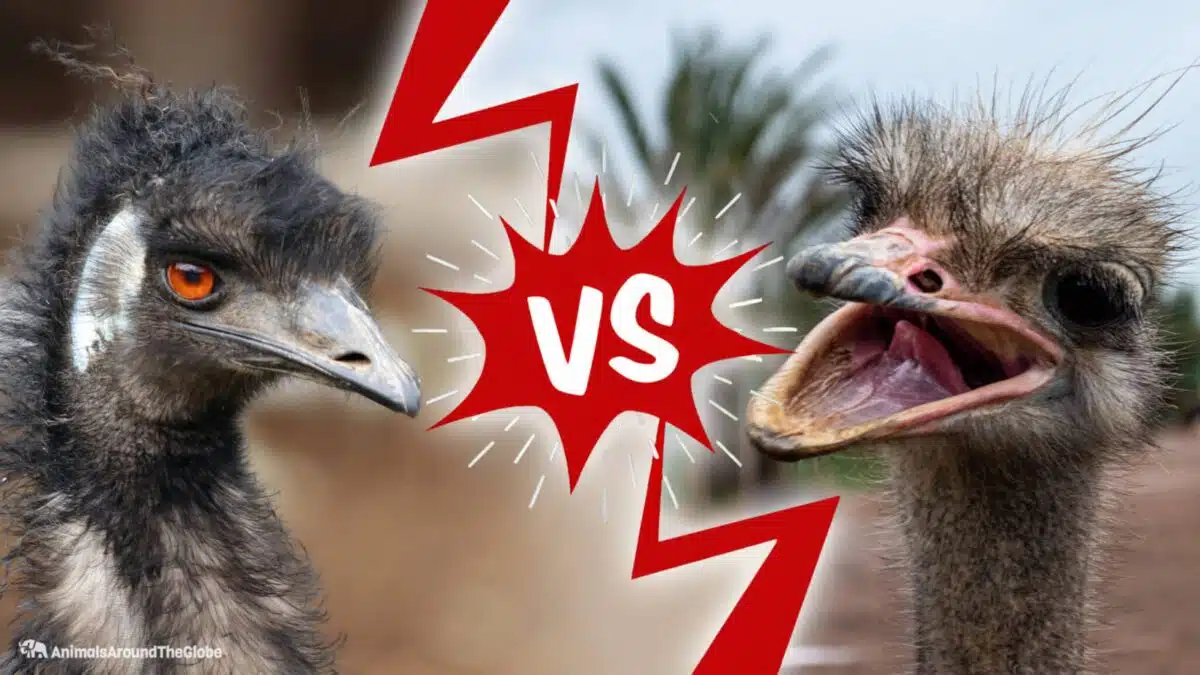Welcome to this comparative article on the two largest birds to walk (yes walk, because neither can fly) our planet. Let’s assess the emu vs. ostrich!
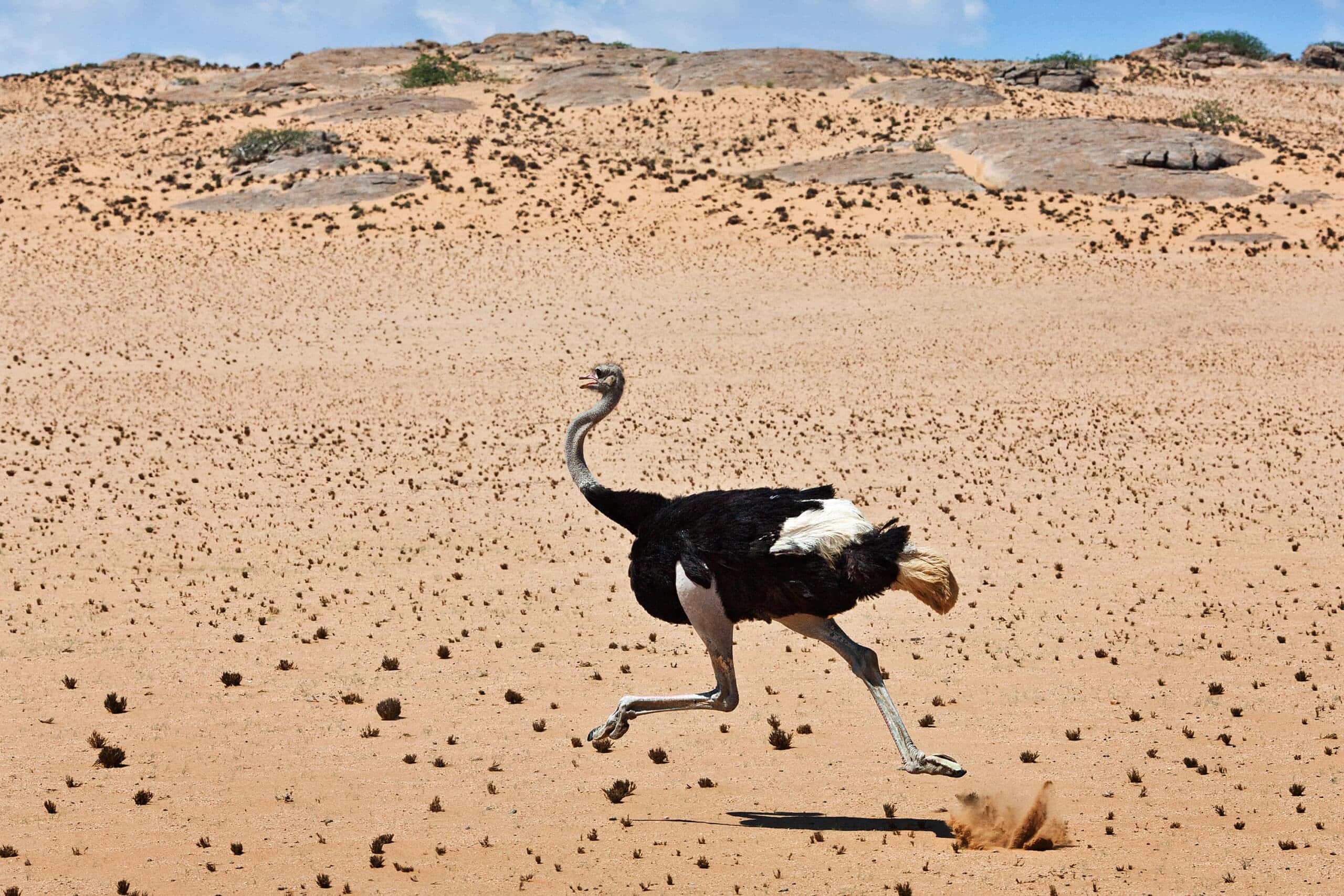
The animal kingdom compromises creatures of various sizes, behaviors, life cycles, and physical features. Commonly the thought never crosses one’s mind that there would be confusion between different animals. Despite the clear distinction and established identification, an ambiguity remains between certain closely related animals.
In order to understand the reasons for confusion in the first place, it is crucial to delve deeply into each and every aspect concerning each respective animal. The following post focuses on an in-depth comparative analysis of two birds: Emu vs. Ostrich, to highlight their differential facts.
Let’s dig deeper into the Emu vs. ostrich review!
Comparing the Emu vs. Ostrich
| Emu | Ostrich | |
| Size | Weight: 40 lbs – 132 lbs Length: 5 ft – 6.2 ft | Weight: 139 lbs – 320 lbs Height: 1.7 m- 2.8 m |
| Speed and Movement Type | -40 mph-Walks and runs | -30-45 mph-Sprints to enemies |
| Bite Power | – NA- they have no teeth and swallow pebbles into the gizzard | -500-2,000 PSI bite power-they have no teeth and use their beak for breaking particles |
| Intelligence | -They are not very smart birds and can be fooled easily-smarter than turkeys but dumber than crows | -They are generally dumb-Their brain is of the size of a walnut- |
| Senses | -Good sense of sight -Good hearing power -Strong sense of smell-They can see colours in the dark. | -They have the largest eyeball in birds-They have a sharp eyesight and can view up to 2.2 miles (3.5 km)-Acute hearing-Strong sense of smell-It can sense enemies from long distances |
| Offensive Powers | -Thrusts-Kicks-Toe claws-Pounces on animals and birds | -Powerful kicks can break bones-Fast-running powers-Clawed feet-Sharp toenail |
| Predatory Behavior | -Mainly pursues and attacks small animals and insects-U | -It preys on small-sized animals, lizards, and insects -It can kill humans in a single blow |
What is an Emu?
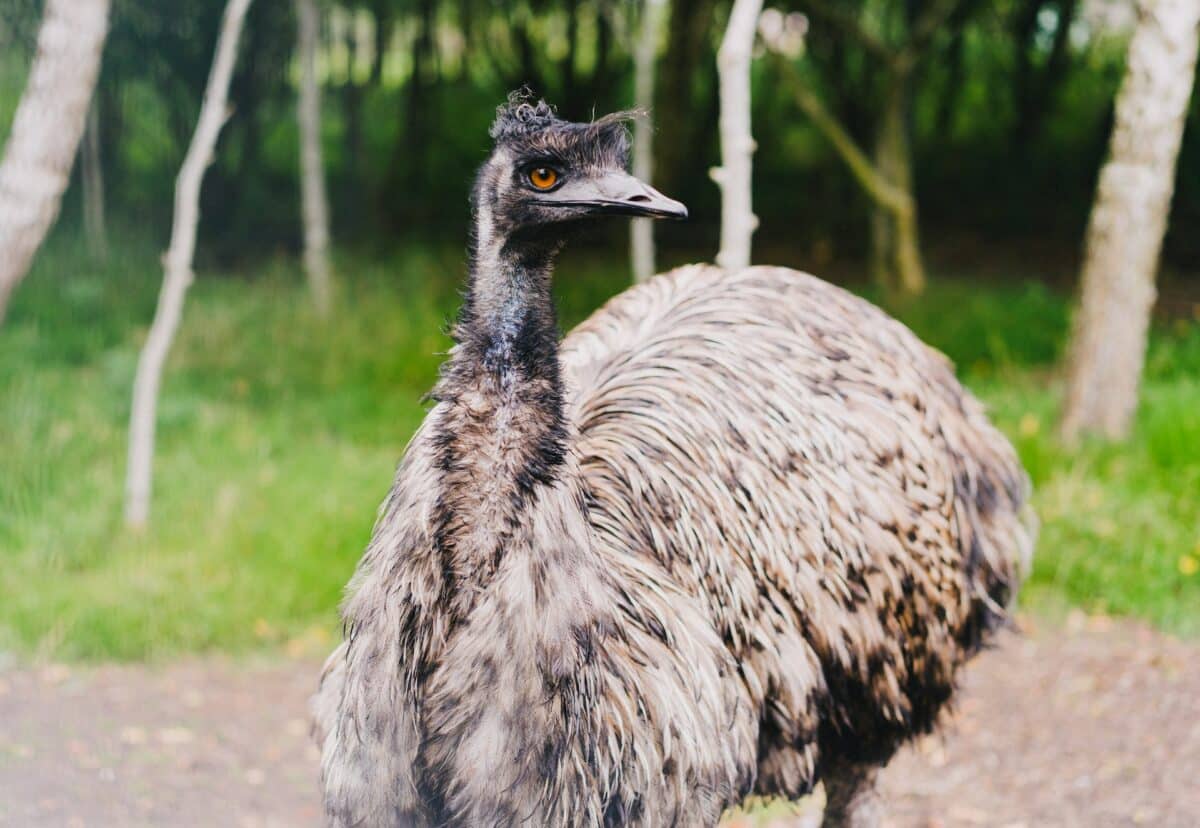
It is a big-sized bird incapable of flying and goes by the name of Emu. It is a native Australian bird and easily identifiable because of its extensive legs with distinct feet having three toes each. They also have elongated necks and plump bodies with small wings. Their bodies are covered in brown and black feathers.
Interestingly the Emus cover distances of hundreds of kilometers on the daily. Emu’s potential to sprint at high speeds is because of the dedicated pelvic limb muscles. Additionally, this bird is exceedingly adaptable to its environment.
The Historical Existence of Emus
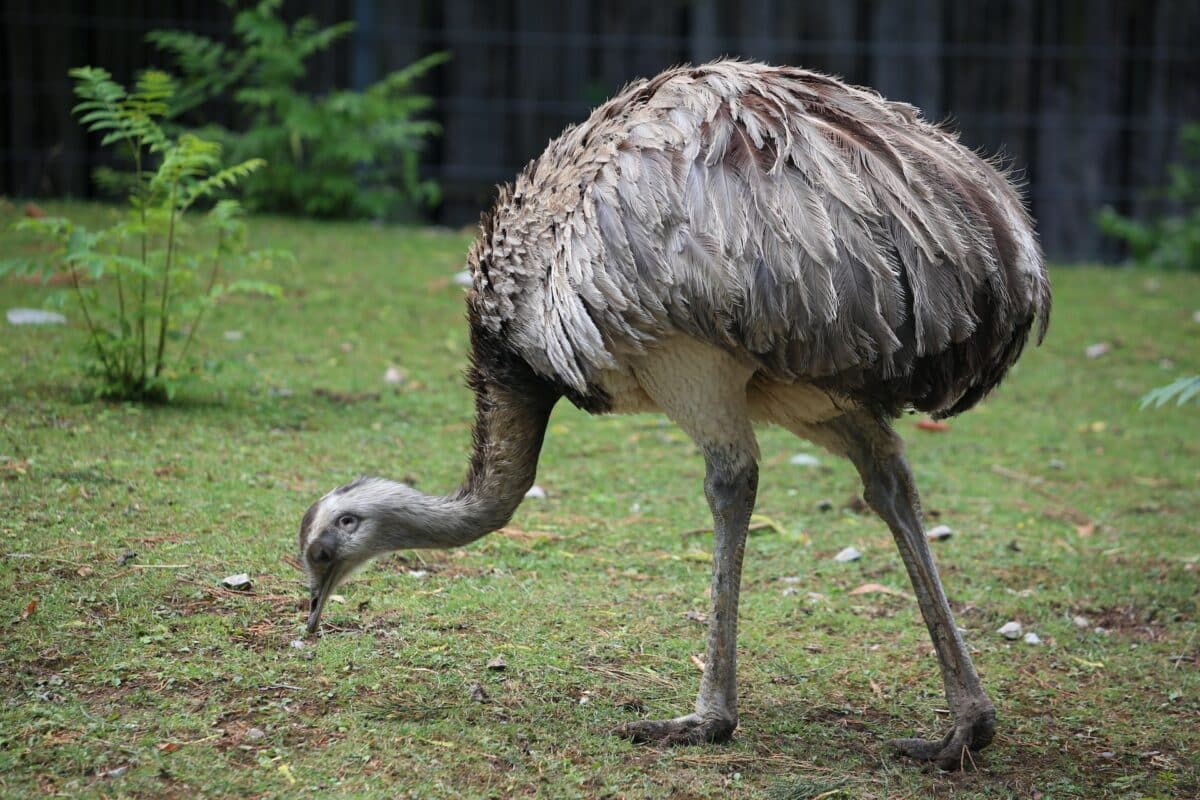
Arthur Phillip initially reported the Emu in his book Voyage to Botany Bay issued in the year 1789. He mentioned the bird by the very interesting name of “New Holland Cassowary.” At the same time, an ornithologist named John Latham, who worked with the pre-stated author on his respective book, was responsible for studying multiple species of birds in Australia.
Emus are known by the scientific name “Dromaius Novaehollandiae,” which is the literal Latin translation of the phrase “fast-footed New Hollander.” The modern name used for the respective bird in almost all publications is “Dromaius” or a substitute spelling of Dromiceius.
The Places Where Emus Commonly Live
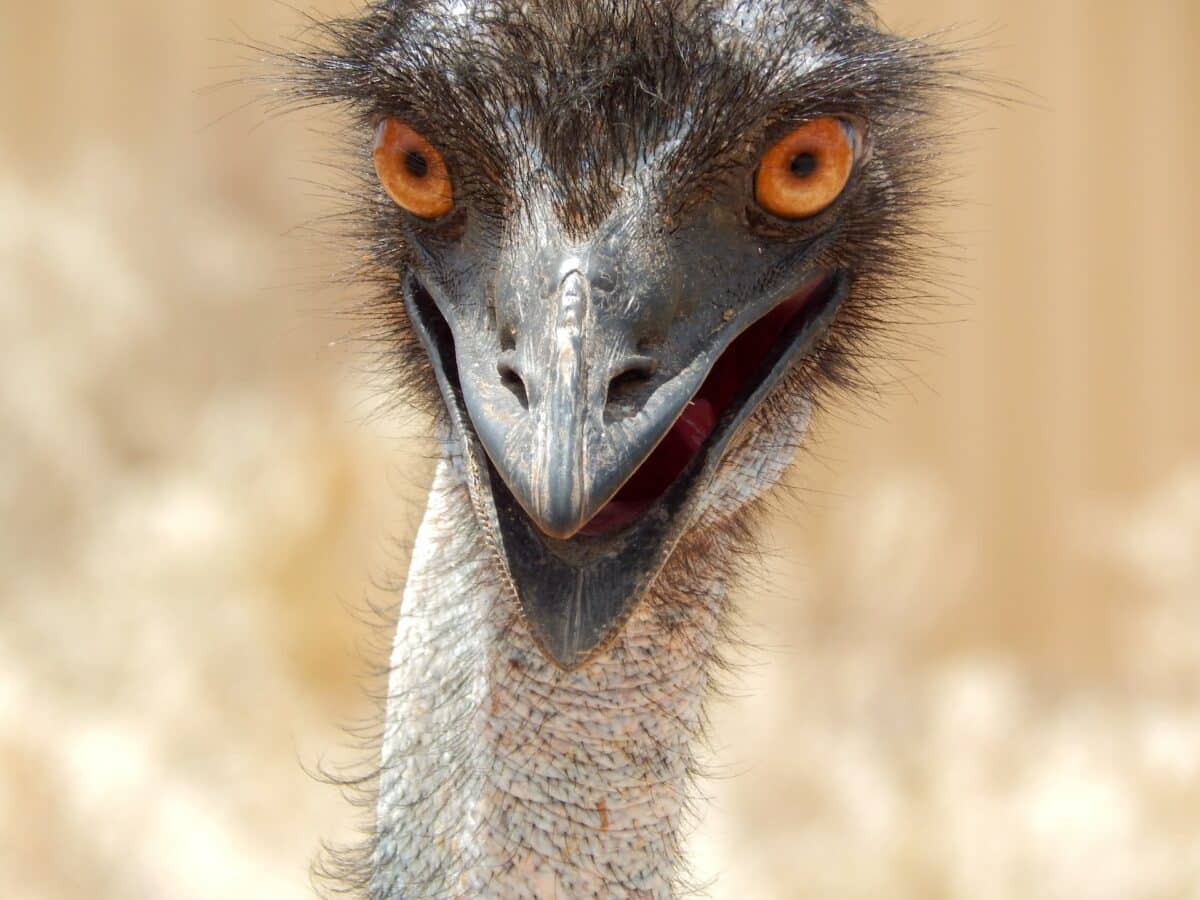
The Emus prefer living in areas that are not conventionally chosen by most animals – meaning they live a secluded life. Summertime is the time you would spot them easily. Emus will always favor spacious and aerated places that are not densely populated.
It is known that Emus were once living across Tasmania, but now anymore. Owing to their characteristic adaptation features, they are well suited for many climatic conditions. They can withstand both temperate and tropical climates.
Emu Through Biological Lens
| Kingdom | Animalia |
| Subkingdom | Bilateria |
| Infrakingdom | Deuterostomia |
| Phylum | Chordata |
| Subphylum | Vertebrata |
| Infraphylum | Gnathostomata |
| Superclass | Tetrapoda |
| Class | Aves |
| Order | Casuariiformes |
| Family | Dromaiidae |
| Genus | Dromaius |
| Species | Dromaius Novaehollandiae |
| Subspecies | Dromaius novaehollandiae baudinianus, Dromaius novaehollandiae diemenensis, Dromaius novaehollandiae, Dromaius novaehollandiae novaehollandiae. |
How Do Emus Breed?
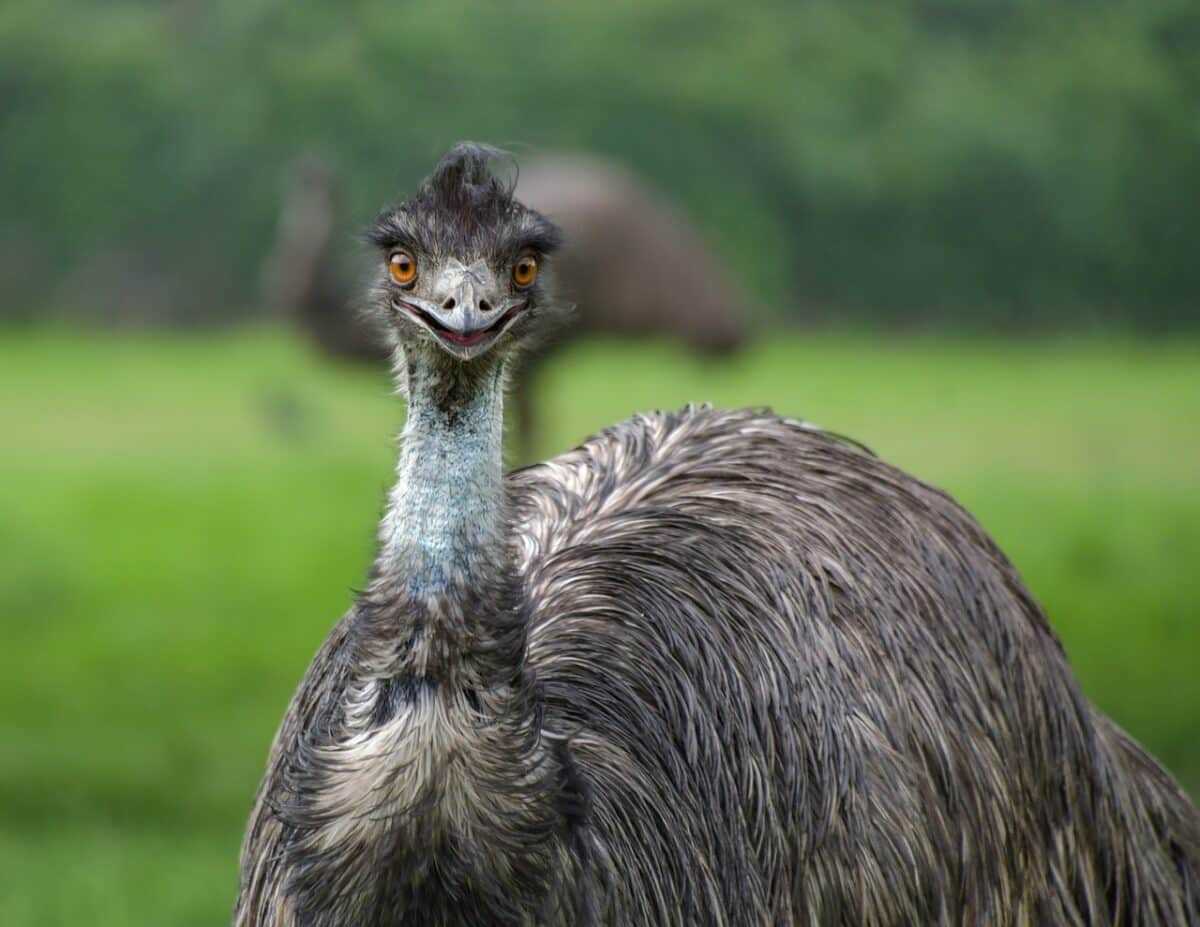
The months of summer and autumn are particularly significant for Emus as it is around this time that the male and female birds form pairs with the intention of having offspring together in the coming colder months of winter.
The first stage of breeding involves the conscious creation of a comfortable and favorable environment to safely house their precious eggs. It involves preparing the nest for this incubation by cleaning it and lining it with leaves or grass.
At one time, the female bird lays anywhere between 5 to 15 eggs. Each egg is a marvel of nature. Especially its beautiful color – a combination of teal and blue. Roughly estimated, the newly laid eggs are approximately the size of a human hand.
The female Emu’s major task is laying the eggs, after which she bids farewell and leaves the nest. This ultimately means that the following incubation responsibilities are to be carried out by the male Emu who is then responsible for providing warmth and shelter to the eggs by sitting on them.
The entire incubation process is spread over eight weeks, involving the male Emu sitting on the eggs in one position continuously. During this phase, the male loses an immense amount of body weight as it gives up eating for the most part and survives off the stored body fat. The entire process of incubation spans well over 56 days.
When the eggs hatch, babies weigh roughly about 18 ounces. Newborns have off-white skin with remarkable dark brown bands. Their unique color combination is a blessing of nature to the bird, helping it to camouflage and save itself from predators. The average lifespan of an Emu living in the wild can range anywhere between 10 years to 20 years.
Baby Emus grow at a fast pace, and they attain complete maturity within a year. After which, they prefer staying with their parent’s family for around six months, followed by their departure in quest of breeding their own family in the coming season.
Some Very Interesting Facts About Emus
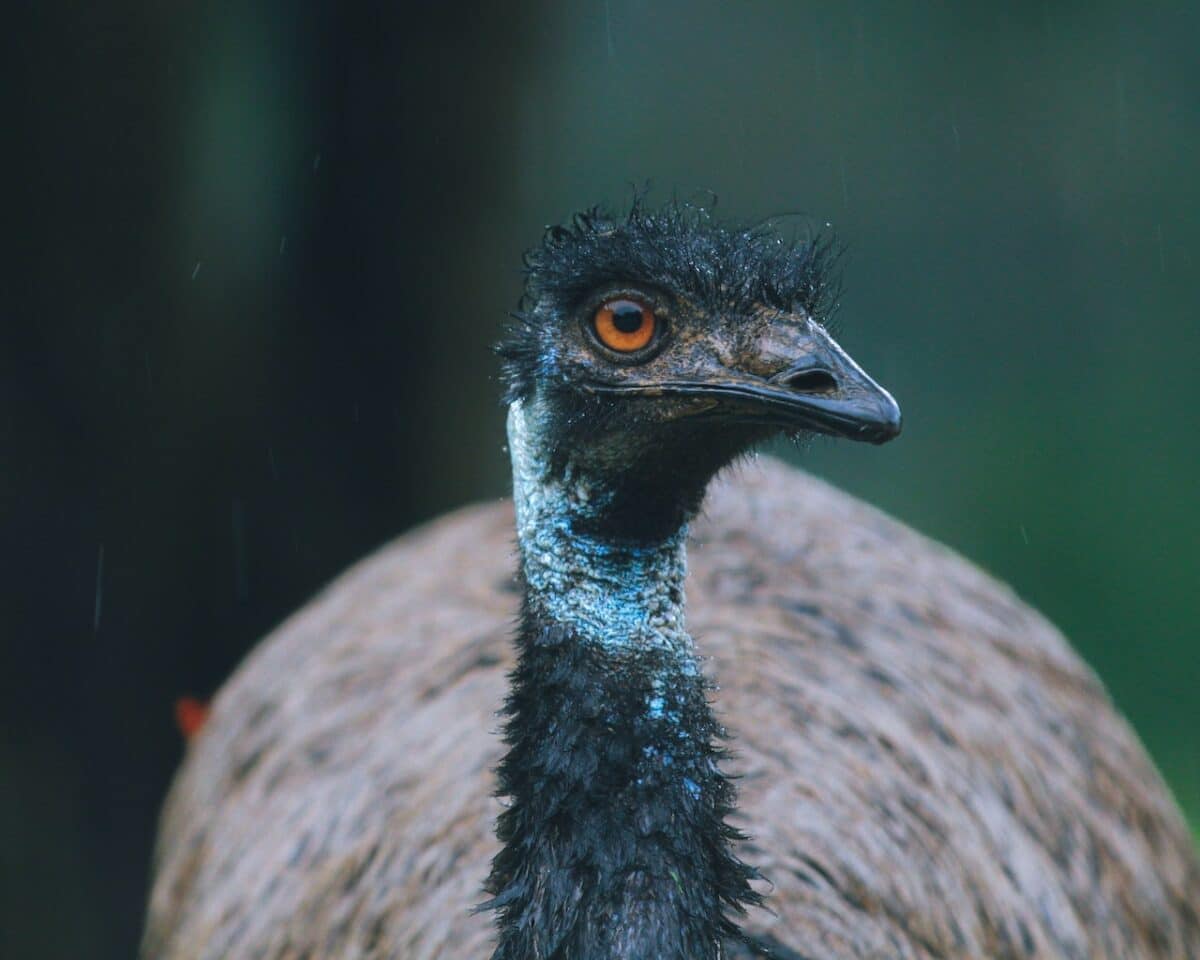
- An Emu’s nest measure approximately 5 feet in width.
- The female lays eggs weighing around 24 ounces; one astounding Emu egg can be equivalent to around 12 eggs of chicken.
- They are fast-running birds that can dart at rushing speeds of 30 mph.
- One of the most interesting features possessed by Emus is their inability to move backward; they can only move in the forward direction.
- They are predominantly omnivorous animals, feeding on both animals and plants, depending on the environment and availability of the type of food.
- Emus intentionally swallow pebbles alongside food, as they play a vital role in the bird’s stomach during the food-churning process.
The Relationship Between Humans and Emus
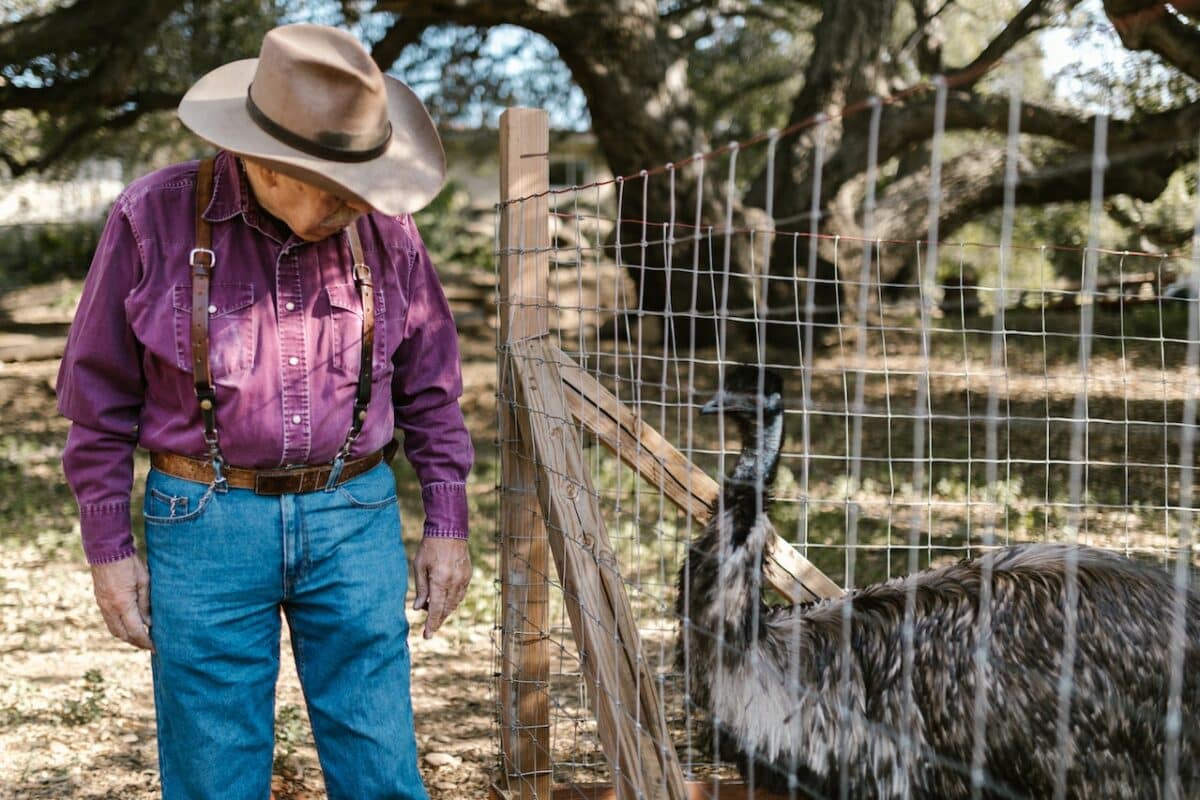
Emu farming is a reality of today and age because it involves many stakeholders and is of high economic value. Moreover, the bird is a vital meat source for the Aborigines in the region.
The fat obtained from these birds has medicinal value and is used for many skin conditions where it is used for direct application as it is considered a drug efficient for fighting off inflammation. Additionally, Emu fat is a treasured lubricant for wooden utensils and tools.
Another interesting use of Emu fat is in the form of traditional paint used for ritualistic body enhancement after mixing it with ochre.
What is an Ostrich?
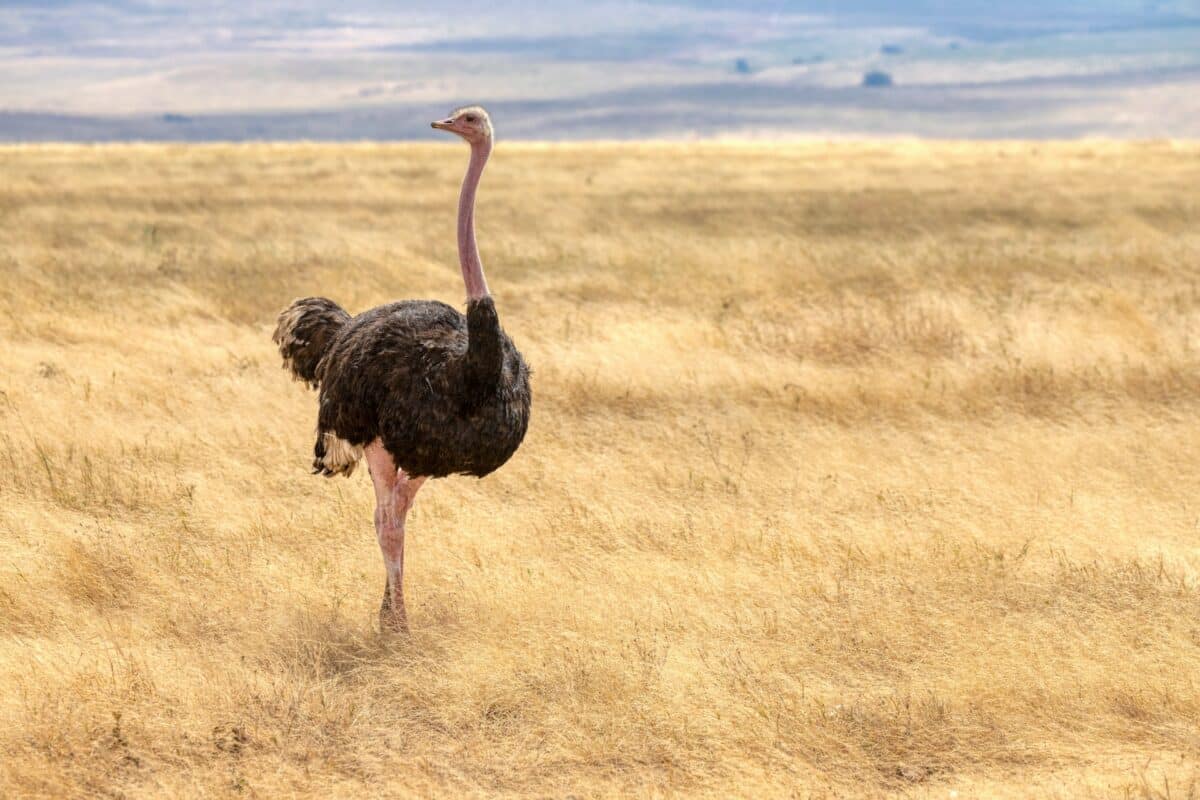
The Ostrich is the largest bird on Earth. Despite being a bird, this native African marvel is unable to fly. Ostriches measure about 9 feet in height. Suppose an ostrich’s framework is divided into two parts lengthwise, then half of the structure is the neck, and the other half consists of the remaining body. An average bird’s weight typically exceeds 330 lbs.
The female Ostrich is slightly shorter in size when compared with the male counterpart. One can easily tell male and female birds apart owing to their feather color. The male bird is usually overall black, along with white feathers in the wings and tail, whereas the female birds are usually brown in color.
The Historical Existence Of Ostriches
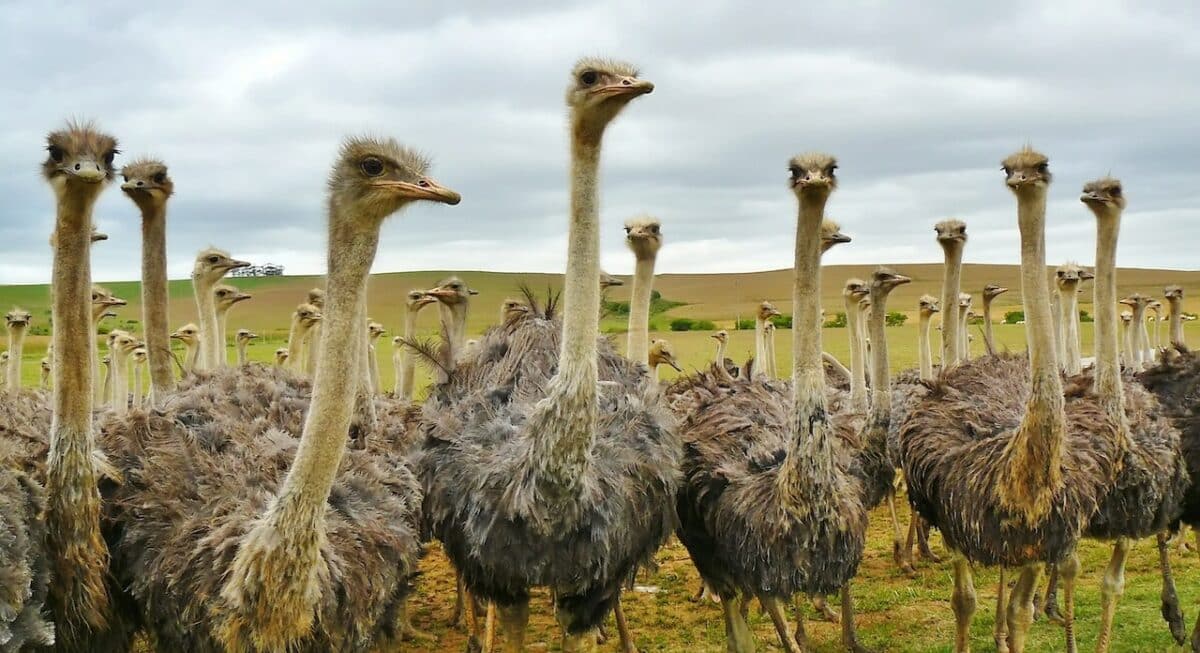
Ostriches are members of a paleognath bird group named Struthioniformes that initially surfaced around the Early Eocene period. The group is an aggregation of multiple non-flying bird forms that live over Asia, Europe, and North America.
One of the earliest found fossils is that of the genus Struthio, which dates back to around 21 million years, from the region of Namibia, located in Africa. Owing to this record, it is believed that the respective genus has an African origin.
The ostriches predominantly found today were also spotted living in the Arabian peninsula if their history is traced back over the years. Apart from that, their presence was also documented in Asian regions around the Far East and Mongolia.
The Places Where Ostriches Commonly Live
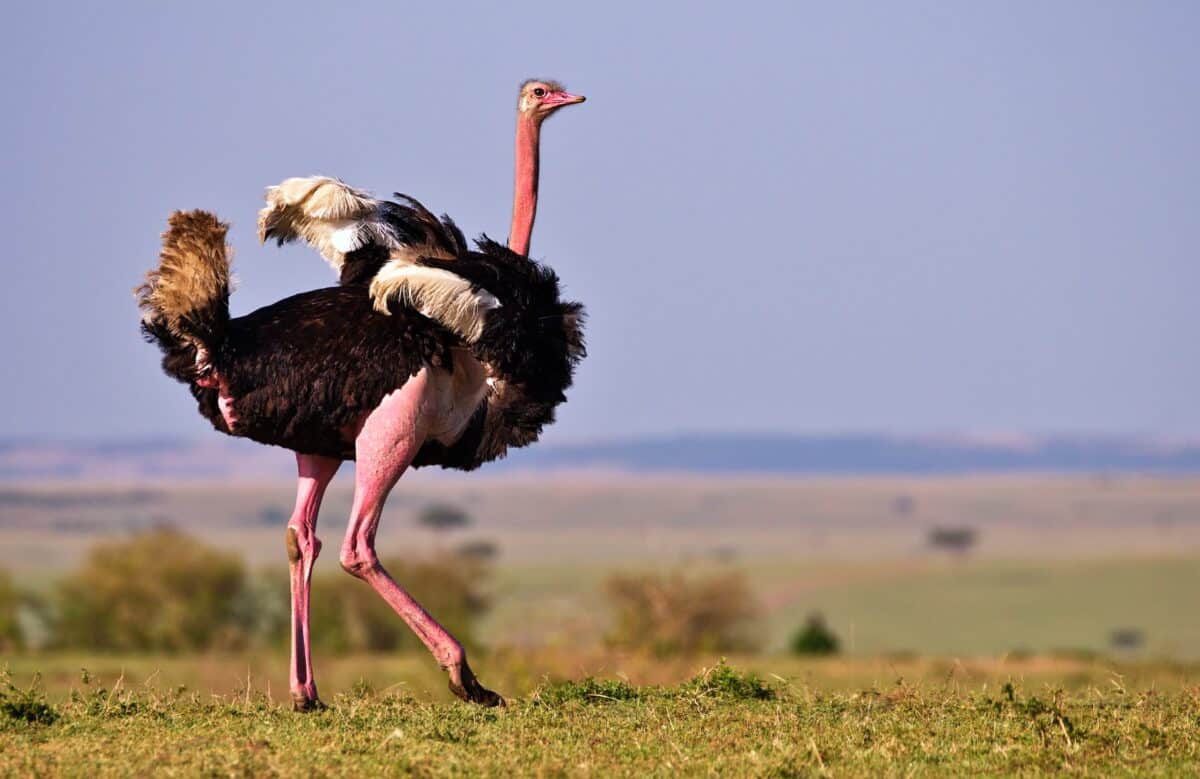
Ostriches, by nature, are free birds who prefer open spaces, particularly the arid regions like Savannah and Sahel in Africa. Although the bird is transported and bred in various regions of the world, owing to multiple reasons, the bird officially belongs to Africa.
Ostrich Through Biological Lens
| Kingdom | Animalia |
| Subkingdom | Bilateria |
| Infrakingdom | Deuterostomia |
| Phylum | Chordata |
| Subphylum | Vertebrata |
| Infraphylum | Gnathostomata |
| Superclass | Tetrapoda |
| Class | Aves |
| Order | Struthioniformes |
| Family | Struthionidae |
| Genus | Struthio |
| Species | Struthio Camelus Linnaeus |
| Subspecies | Struthio Camelus Australis, Struthio Camelus Camelus, Struthio Camelus Massaicus, Struthio Camelus Syriacus. |
How Do Ostriches Breed?
Mating Rituals
The mating between male and female Ostriches is a delicate and organized occurrence. Male birds flatter their female counterparts with their attractive features and muscular bodies. The initial meeting is also a marvelous sight as the male bird bends its head as a sign of respect, followed by the waving and shaking motion of wings and tail.
The ritualistic movement continues with the advancement of males towards females while maintaining the spread of wings and impressing them. However, things take a decisive turn only once the female bird approves of him and allows the mating to begin.
Once the ostrich hen mates with the male counterpart and all the following responsibilities of incubation of eggs and their care are shared among both. The male Ostrich is polygamous, meaning it can have mating relationships with multiple female birds.
If the male Ostrich happens to mate with a wandering female, then the eggs are ultimately laid in the dominant hen’s nest, thus making a communal nest, ensuring the safety of unhatched eggs. Male birds make the nest by digging up dirt with their powerful claws.
Reproduction
In one go, a female Ostrich can lay anywhere between 7 or 10 eggs, with each egg being about 6 inches long and approximately 3 pounds in weight. These dimensions make them the largest laid eggs on Earth, only being surpassed by dinosaur eggs that once existed.
The entire stage of incubation lasts for around 42 to 46 days. Once hatched, the chicks are comparable to the size of a fully mature chicken. Once born, they develop at a fast pace with a growth pattern of 1 foot on average per month.
The growing chicks move away from the nest accompanied by their parents in just a few days following their birth. A significant growth marker in the form of adult plumage is visible around four months of age. At around six months of age, the chicks have grown to about the size of adult birds. Complete maturation in terms of sexual capability is attained around 3 to 4 years of age.
Some Very Interesting Facts About Ostriches
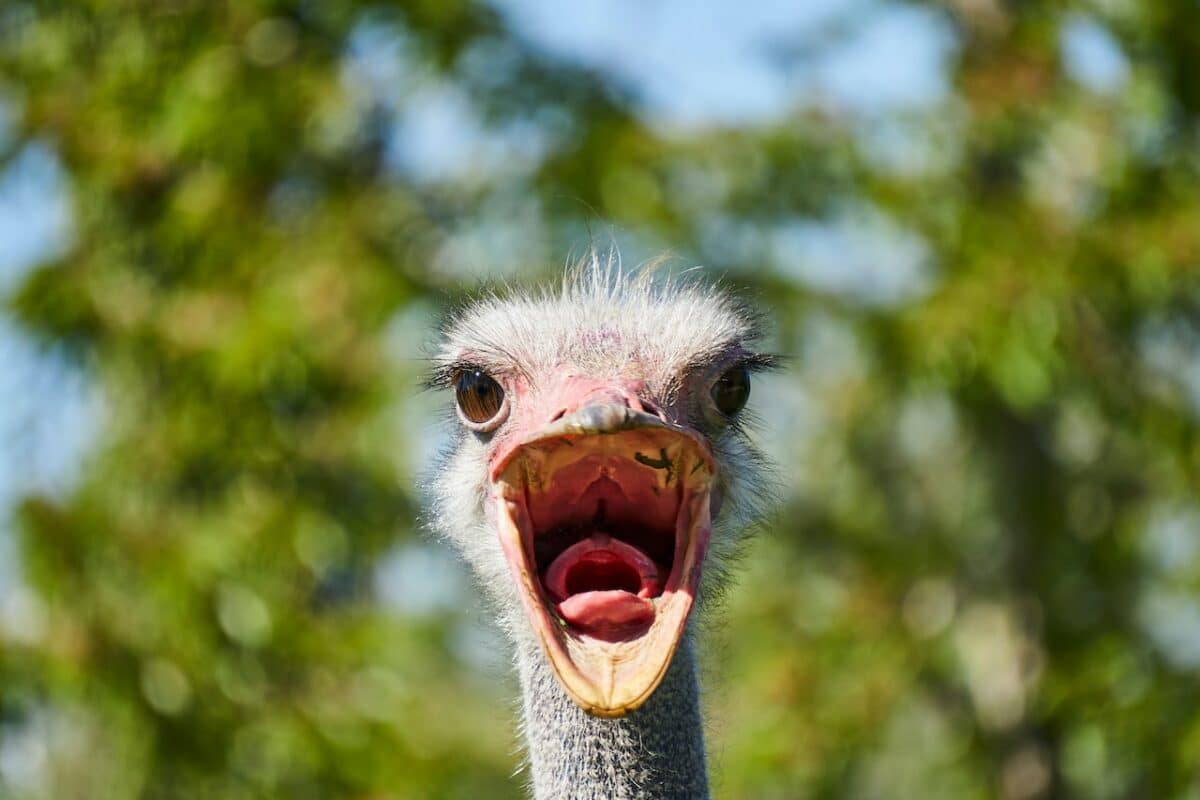
- The male Ostrich is capable of producing a sound that sounds almost like a lion’s roar.
- Ostriches are toothless birds, but they have an interesting mode of grinding food in their stomachs with the help of ingested stones.
- The brain that lies in their small heads is equivalent to the size of a walnut, meaning it is smaller than their eyeballs.
- They are very fast-running birds, with their pace being recorded to be about 45 mph; supposably, they could beat leopards in a race.
- The birds living in the wild enjoy a lifespan of 3 to 40 years, whereas birds in captivity can live up to 70 years of age.
- Ostriches retain the capability of breeding even in their later years.
The Relationship Between Humans and Ostriches
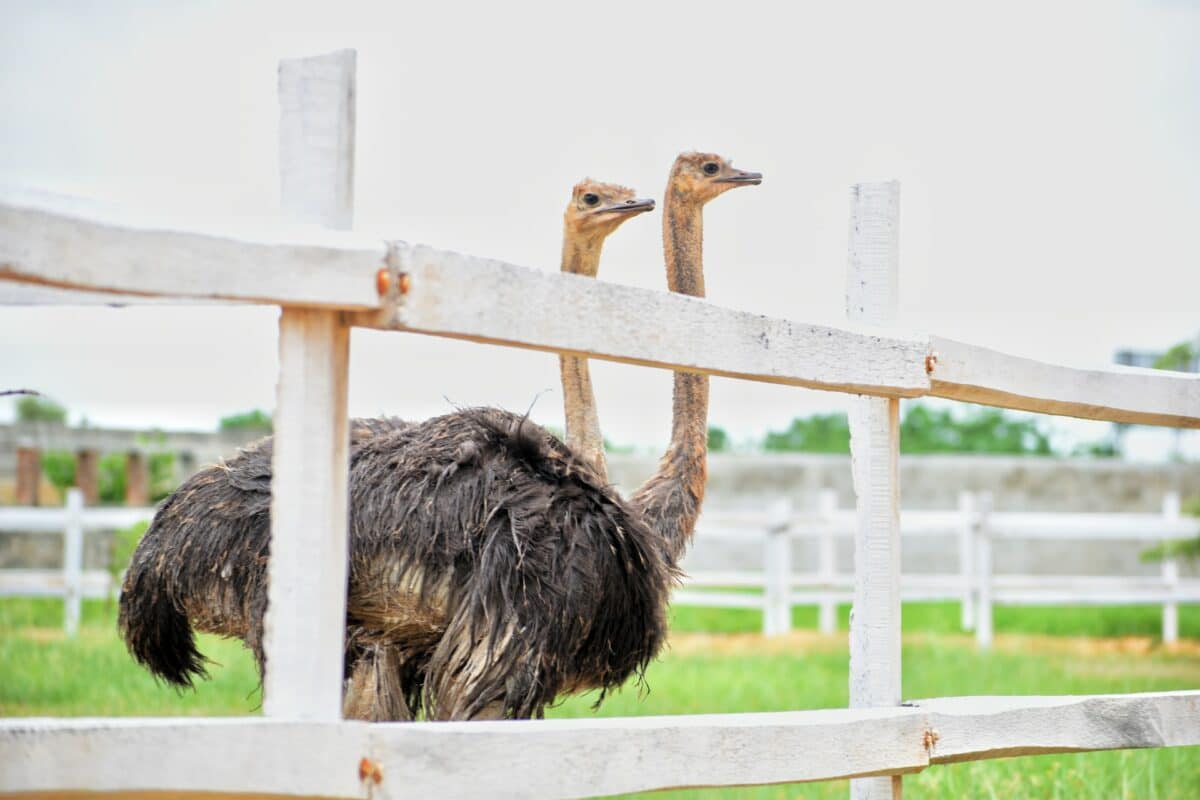
Ostriches are enthralling and beautiful birds who share an interesting relationship with human beings. If we skim through the history, we learn that Ostrich feathers have been a significant feature in French fashion as adornments for female hats.
You would be amazed to know that ostriches are a great source of food for humans in the form of meat and eggs. The bird’s fat and other products obtained from it hold medicinal value. Ostrich bones and feathers are both used for ornamental purposes and used for ritualistic purposes.
Recent advanced research has revealed that the cornea from an Ostrich’s eye can be used to surgically replace the Human eye cornea.
The Characteristic & Comparative Differences Between Ostrich vs. Emu
- Emus are endemic to Australia; meanwhile, ostriches are African inhabitants.
- Farming of both birds is a common practice, but the reasons behind it are different. Emus are farmed majorly for their meat and leather, whereas ostriches are mainly bred for their meat, eggs, and feathers.
- If only the living species are accounted for, then there is a single existing species of Emu. On the contrary, Ostriches are subdivided into two main species, namely: the Somali Ostrich and the Common Ostrich.
- A distinctive feature that can help you differentiate between the two birds is the respective size of their wings. Emus have small-sized disjunct wings. Ostriches have long wings clocking about 6 feet when measured.
- Emu’s feet have three toes, whereas Ostrich’s feet have two toes.
- Although both birds are massively big when compared to other birds, the Ostrich stands the tallest, with a difference of around 2 feet.
- When both the birds are studied based on their lifespans, Emus lose the battle as Ostriches enjoy longevity.
- The laid eggs of both birds are distinctly different and could easily be told apart based on their color. Emu eggs are bluish-green, whereas Ostriches lay cream-colored eggs.
- The ostriches win the race when both the birds are compared based on their running speeds.
- During the incubation phase, female ostriches take on the responsibility of providing warmth and safety to the unhatched eggs by sitting on them. Interestingly Emus exhibit the opposite behavior, where male Emus take on the aforementioned duties.
The Characteristic & Comparative Similarities Of Ostrich vs. Emu
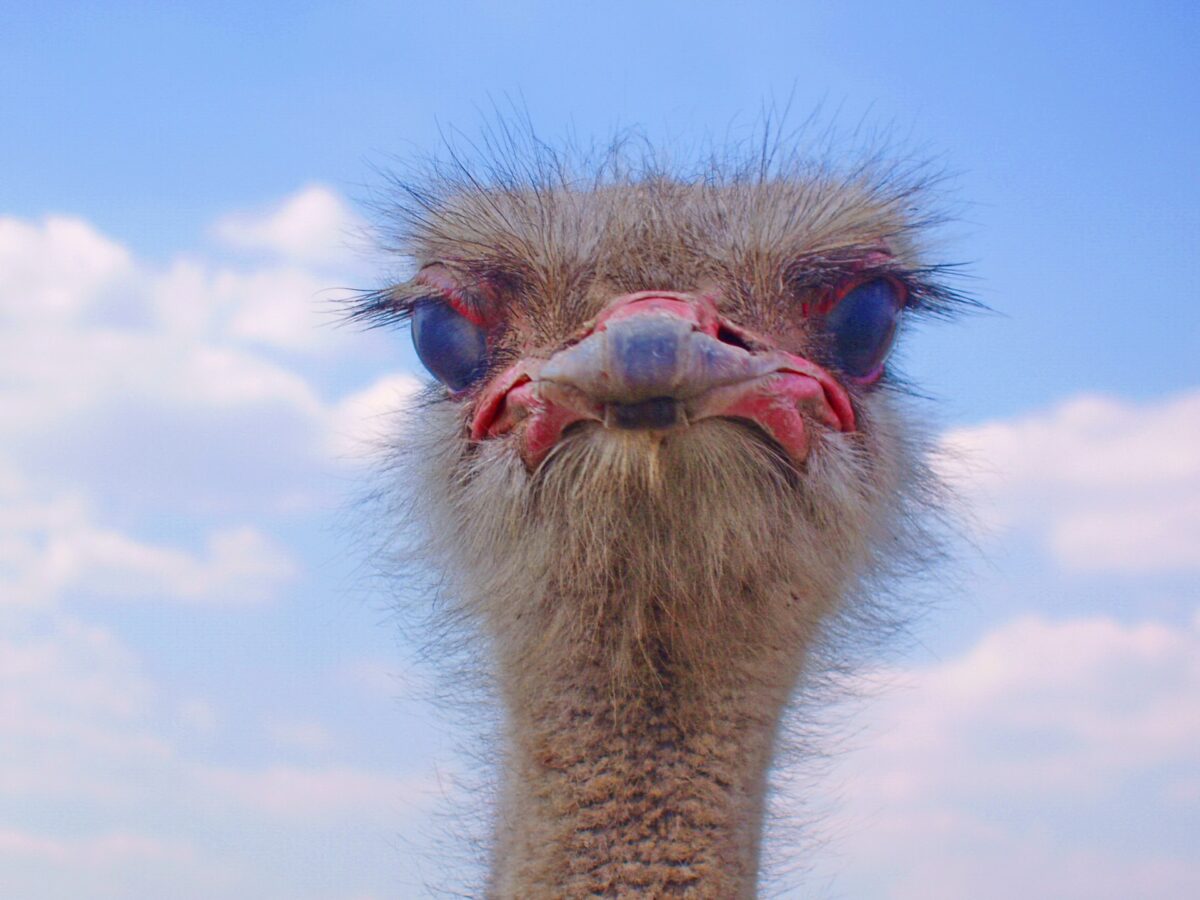
- Both Emus and Ostriches are descendants of the same bird family.
- They both share identical genetic traits; hence both are very similar in their appearance.
- Emus and ostriches are birds with a small brain-to-body ratio and are consequently considered not-so-intelligent beings.
- Also, both Emus and Ostriches do not own the capability of flying but have impressive running capabilities.
- Both birds are favored for farming and breeding because they are of great economic value.
- Emus and Ostriches have a special digestive mechanism where both rely on ingested pebbles and stones to assist with the churning and grinding of food in the stomach.
Read some other interesting differences between these birds here.
Wrapping Up: Emu vs. Ostrich
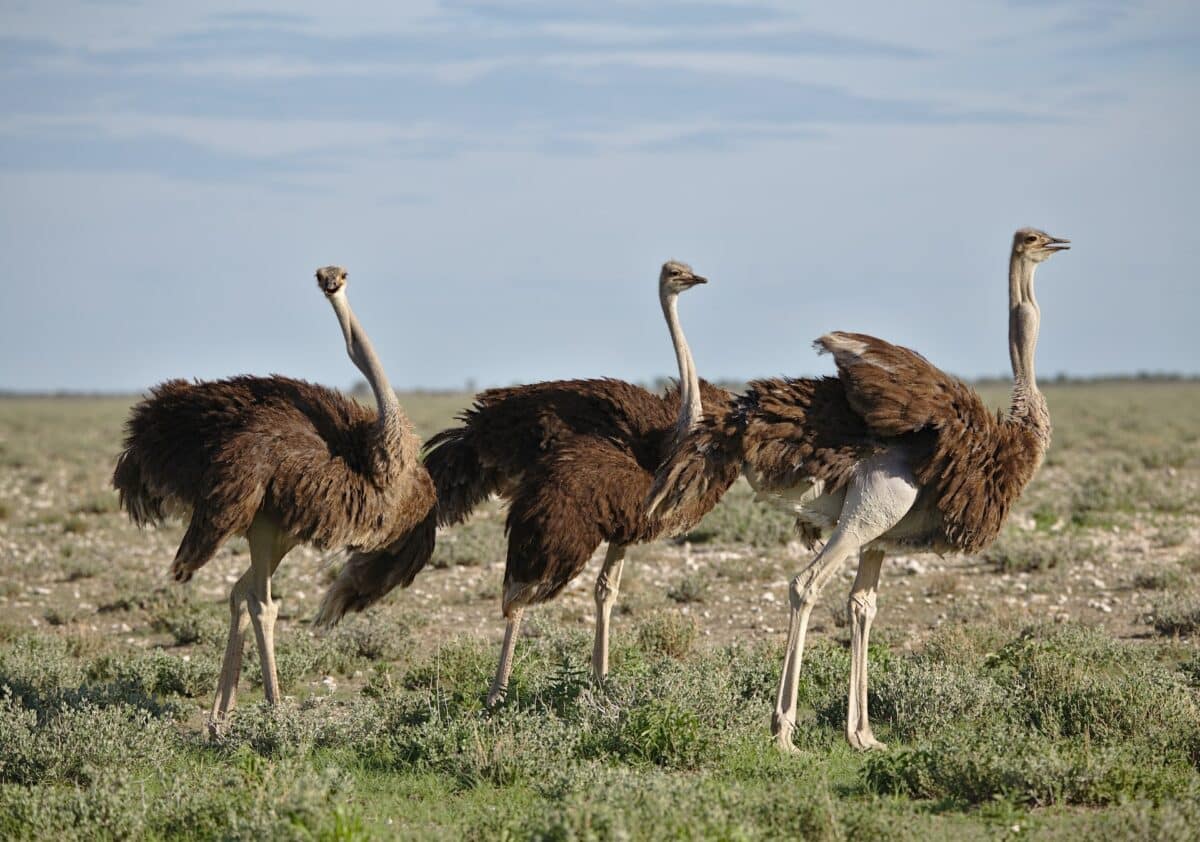
This script was designed and compiled with a conscious effort to keep it precise yet extremely informative. An in-depth analysis has been carried out by listing the comparative differences and similarities between the two members under scrutiny: the Emu vs. Ostrich. Extensive study reveals that both animals enjoy plenty of similarities, giving rise to laymen’s confusion.
Thank you for reading our piece on the emu vs. ostrich! Have you ever had the opportunity to try their eggs or meat? To expand your bird-vocabulary even further flock on over to our post about the Differences Between Hens and Chickens.
Join our Forum for free today!


